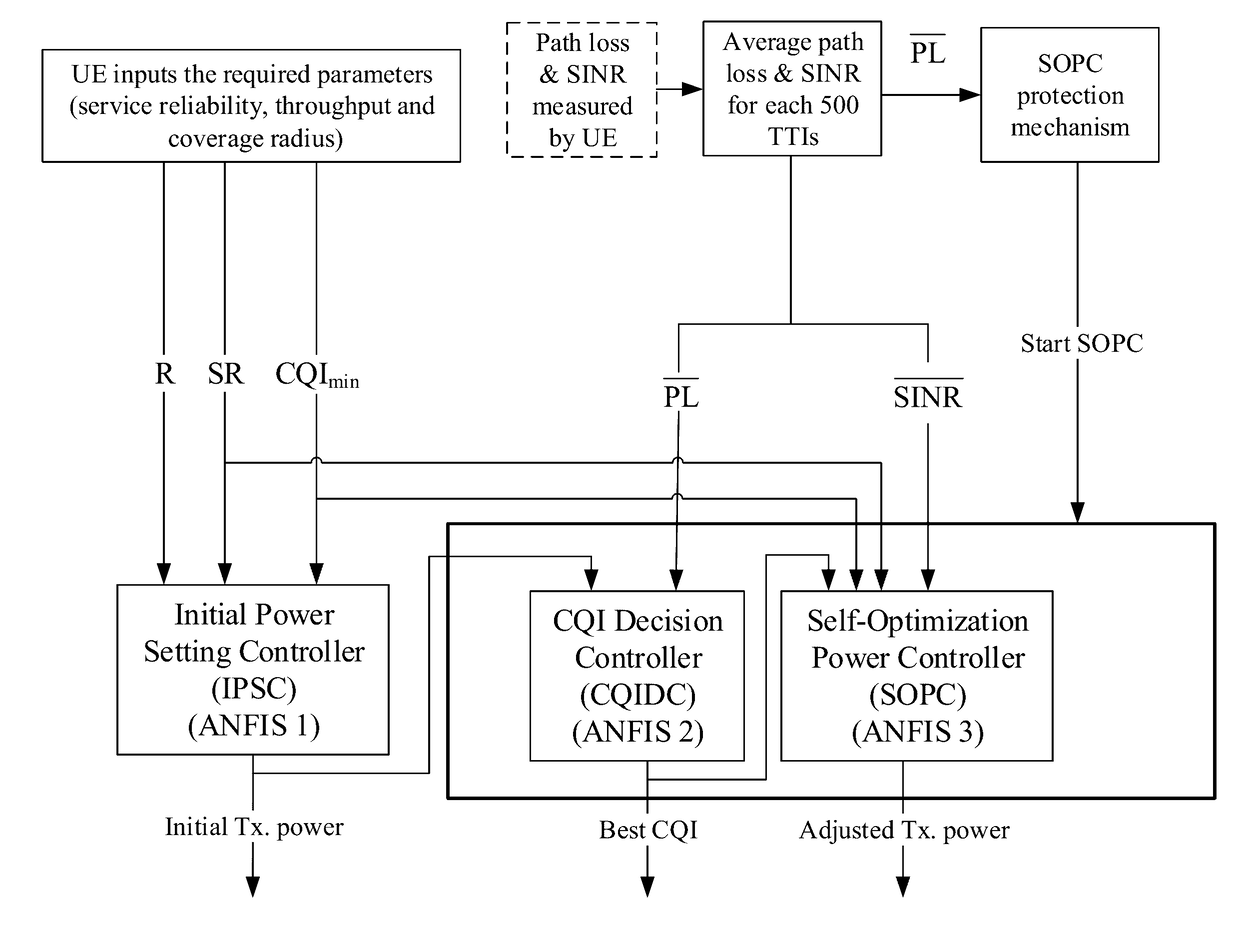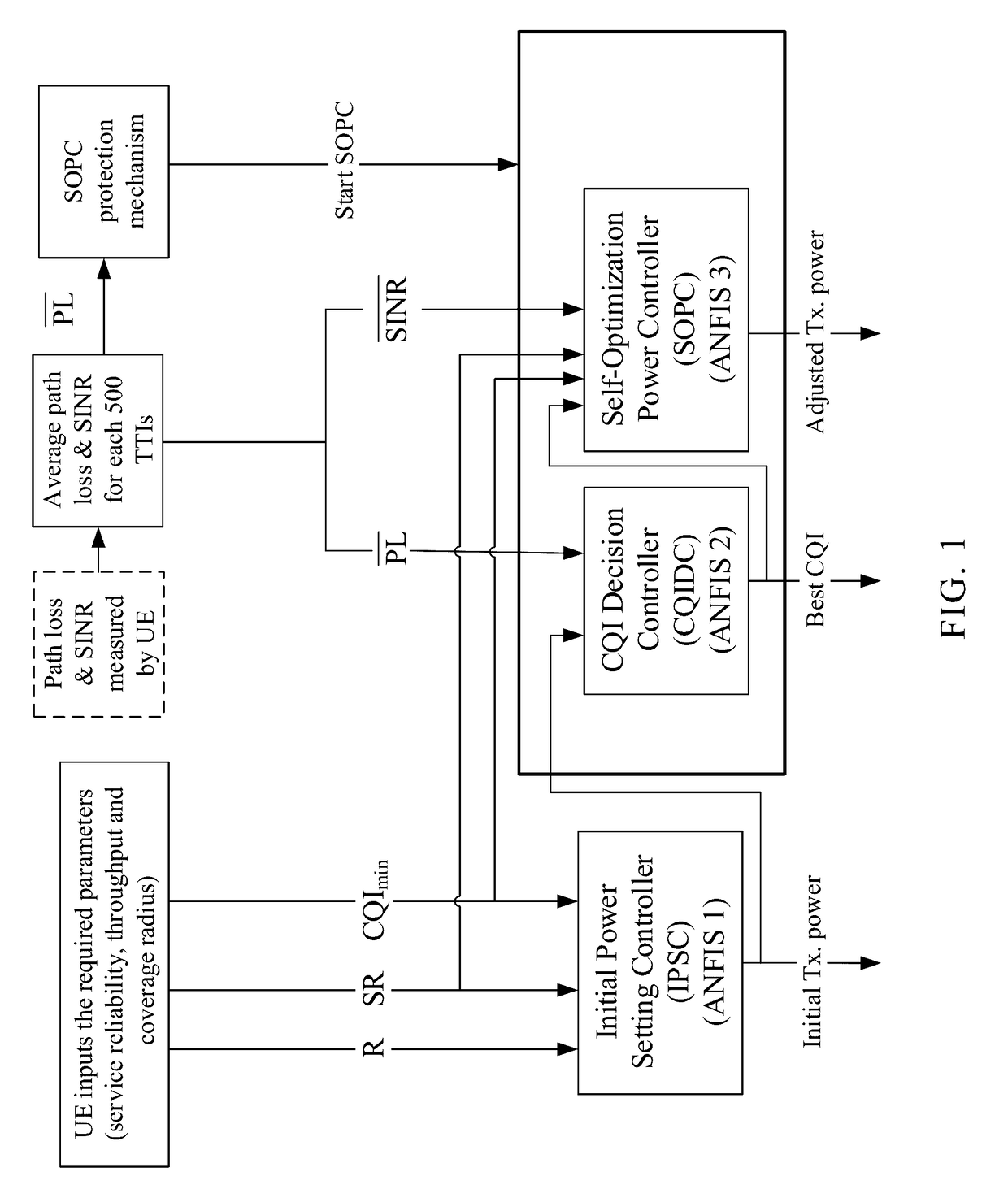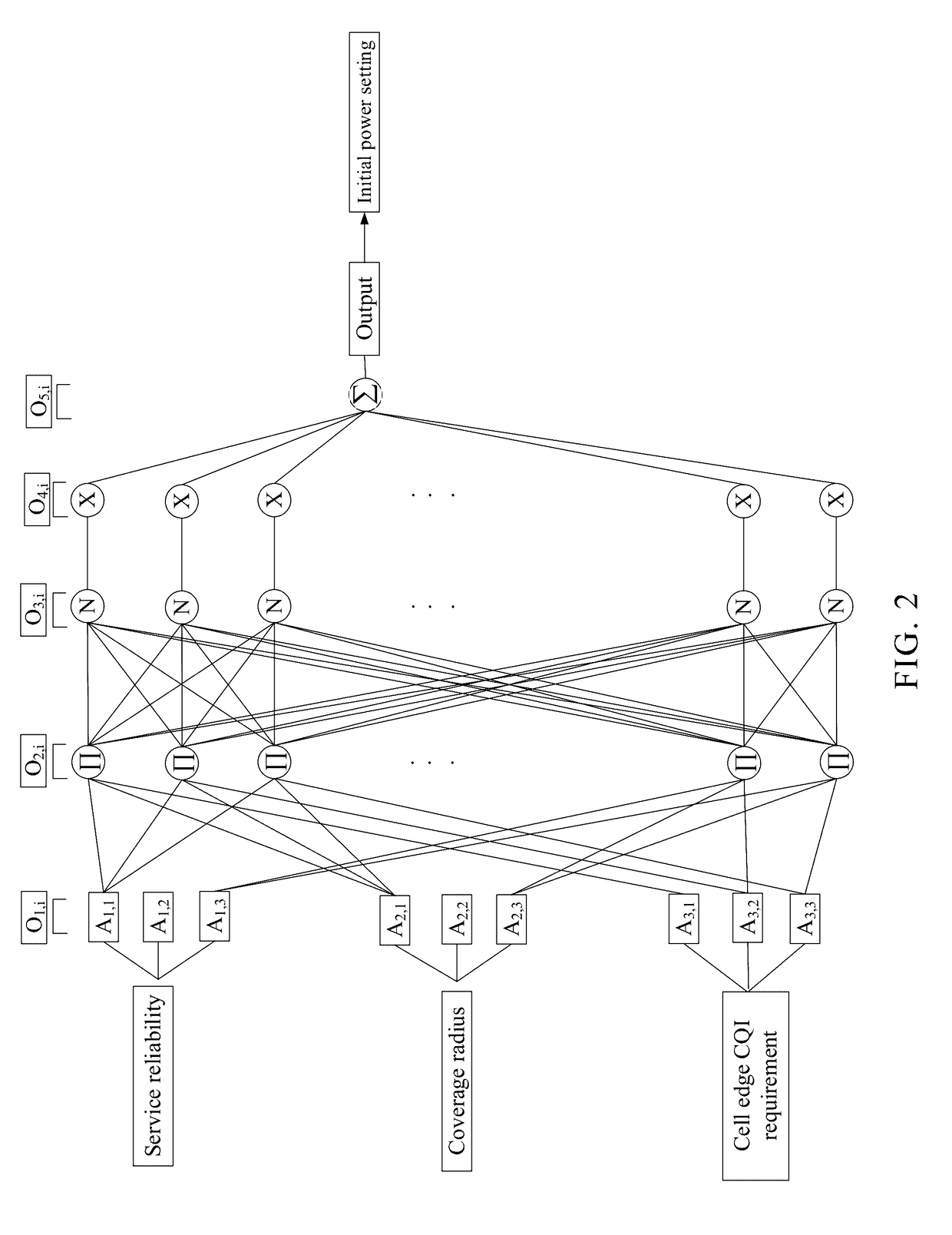Self-Optimizing Deployment Cascade Control Scheme and Device Based on TDMA for Indoor Small Cell in Interference Environments
a technology of cascade control and cascade power, which is applied in the direction of site diversity, transmission monitoring, instruments, etc., can solve the problems of not considering the performance of multi-user service reliability (sr), network operator may not be able to control femtocells directly, and power cannot be controlled by channel environment, so as to reduce interference, minimize transmit power and interference power, the effect of saving energy
- Summary
- Abstract
- Description
- Claims
- Application Information
AI Technical Summary
Benefits of technology
Problems solved by technology
Method used
Image
Examples
Embodiment Construction
[0060]For your esteemed members of reviewing committee to further understand and recognize the fulfilled functions and structural characteristics of the invention, several preferable embodiments cooperating with detailed description are presented as the follows.
[0061]The invention presents an adaptive neural fuzzy inference system (ANFIS) based self-optimization deployment cascade control (SODCC) device for indoor small cell operated in the multi-user (MU) and interference environments to self-optimize the MU service reliability (SR), average throughput, transmit power and interference for multimedia call services.
[0062]The principal structure of the present invention is an ANFIS based self-optimization deployment cascade control (SODCC) device as shown in FIG. 1; it mainly contains an ANFIS based initial power setting controller (IPSC) in the first unit, an ANFIS based channel quality index (CQI) decision controller (CQIDC) in the second unit and an ANFIS based self-optimizing powe...
PUM
 Login to View More
Login to View More Abstract
Description
Claims
Application Information
 Login to View More
Login to View More - R&D
- Intellectual Property
- Life Sciences
- Materials
- Tech Scout
- Unparalleled Data Quality
- Higher Quality Content
- 60% Fewer Hallucinations
Browse by: Latest US Patents, China's latest patents, Technical Efficacy Thesaurus, Application Domain, Technology Topic, Popular Technical Reports.
© 2025 PatSnap. All rights reserved.Legal|Privacy policy|Modern Slavery Act Transparency Statement|Sitemap|About US| Contact US: help@patsnap.com



